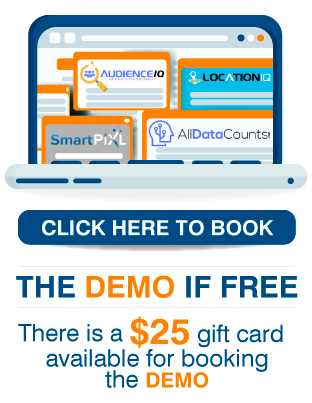Harnessing the Power of Data to Drive Business Success
Businesses increasingly rely on data analytics to gain actionable insights and drive strategic decision-making. From understanding customer behaviour to optimizing operations, data analytics is crucial in unlocking valuable insights that can lead to business success. Let’s explore eight types of data analytics that businesses can leverage to improve decision-making processes:
- Descriptive Analytics: Descriptive Analytics involves analyzing historical data to understand what has happened in the past. It provides businesses with insights into trends, patterns, and key performance indicators (KPIs) based on historical data. Descriptive analytics help businesses gain a comprehensive overview of their operations and performance by visualizing data through charts, graphs, and dashboards.
- Diagnostic Analytics: Diagnostic analytics goes a step further by identifying the reasons behind past events or outcomes. It focuses on understanding the root causes of issues or trends observed in descriptive analytics. By drilling into data and conducting more profound analysis, diagnostic analytics helps businesses uncover insights into why certain events occurred and enables them to address underlying issues effectively.
- Predictive Analytics: Predictive analytics leverages historical data and statistical algorithms to forecast future outcomes or trends. By analyzing past patterns and trends, predictive analytics can predict future behavior or events with a certain degree of probability. Businesses can use predictive analytics to anticipate customer needs, identify potential risks, and make proactive decisions to stay ahead of the curve.
- Prescriptive Analytics: Prescriptive analytics takes predictive analytics further by recommending actions or strategies to achieve desired outcomes. It predicts future outcomes and provides insights into the best course of action to optimize results. Prescriptive analytics helps businesses make data-driven decisions and maximize efficiency by leveraging advanced algorithms and optimization techniques.
- Diagnostic Analytics: Diagnostic analytics involves identifying patterns and relationships in data to understand the underlying factors driving specific outcomes or trends. It focuses on uncovering the “why” behind observed patterns or events, helping businesses gain deeper insights into their operations and performance.
- Text Analytics: Text analytics, also known as text mining or natural language processing (NLP), involves extracting insights from unstructured text data such as customer reviews, social media posts, and emails. Businesses can uncover valuable insights into customer sentiment, preferences, and opinions by analyzing text data, enabling them to make informed decisions and enhance customer experience.
- Social Media Analytics: Social media analytics involves analyzing data from social media platforms to understand customer behavior, sentiment, and engagement. Businesses can gain insights into customer preferences, market trends, and competitive intelligence by monitoring social media conversations. Social media analytics enables businesses to optimize their social media strategies, identify opportunities for engagement, and measure the impact of their social media efforts.
- Real-time Analytics: Real-time analytics involves analyzing data as it is generated to provide immediate insights and actionable intelligence. By processing data in real-time, businesses can respond quickly to changing market conditions, customer preferences, and emerging trends. Real-time analytics enables companies to make data-driven decisions immediately, optimizing operations and enhancing customer experiences.
With so many ways to collect, categorize, and interpret raw data, organizations are increasingly relying on data to help them increase efficiency, gain a competitive advantage, reduce risks, and capitalize on future opportunities. Organizations can improve their decision-making processes and make more informed choices by understanding and identifying the best way to harness and analyze industry data.
Data Analytics FAQ
Descriptive analytics involves analyzing historical data to understand past events and performance. It helps businesses identify trends, patterns, and key performance indicators (KPIs) by visualizing data through charts, graphs, and dashboards. By providing a comprehensive overview of past operations, descriptive analytics allows businesses to identify areas for improvement and make informed decisions based on historical data.
While descriptive analytics focuses on understanding “what” happened in the past, diagnostic analytics delves deeper into “why” those events occurred. Diagnostic analytics aims to uncover the root causes behind trends and patterns observed in historical data. By identifying these underlying factors, businesses can address issues effectively and prevent their recurrence.
Predictive analytics utilizes historical data and statistical algorithms to forecast future outcomes and trends. By analyzing past patterns, businesses can predict future behavior or events with a certain degree of probability. This allows businesses to anticipate customer needs, identify potential risks, and make proactive decisions to stay ahead of the curve. For example, predictive analytics can help businesses forecast sales, optimize inventory levels, and personalize marketing campaigns.
Prescriptive analytics goes beyond predicting future outcomes by recommending specific actions to optimize results. While predictive analytics tells you “what” might happen, prescriptive analytics suggests “how” to achieve desired outcomes. It leverages advanced algorithms and optimization techniques to provide businesses with data-driven recommendations and strategies for maximizing efficiency and achieving their goals.
Text analytics, also known as text mining or natural language processing (NLP), extracts insights from unstructured text data such as customer reviews, social media posts, and emails. By analyzing this data, businesses can understand customer sentiment, preferences, and opinions. These insights enable businesses to improve products and services, tailor marketing messages, and enhance customer experiences.
Social media analytics analyzes data from social media platforms to understand customer behavior, sentiment, and engagement. By monitoring social media conversations, businesses can gain insights into customer preferences, market trends, and competitive intelligence. This information allows businesses to optimize their social media strategies, identify opportunities for engagement, and measure the impact of their social media efforts.
Real-time analytics involves analyzing data as it is generated, providing immediate insights and enabling businesses to respond quickly to changing conditions. This allows businesses to make data-driven decisions in real-time, optimizing operations and enhancing customer experiences. For example, real-time analytics can be used to detect and prevent fraud, personalize website content, and monitor supply chain logistics.
Organizations can leverage data analytics to gain a competitive advantage, improve efficiency, reduce risks, and capitalize on future opportunities. By understanding the different types of data analytics and their applications, businesses can make more informed decisions, optimize processes, and achieve better outcomes. Data analytics empowers organizations to become more data-driven and agile in a constantly evolving business landscape.


